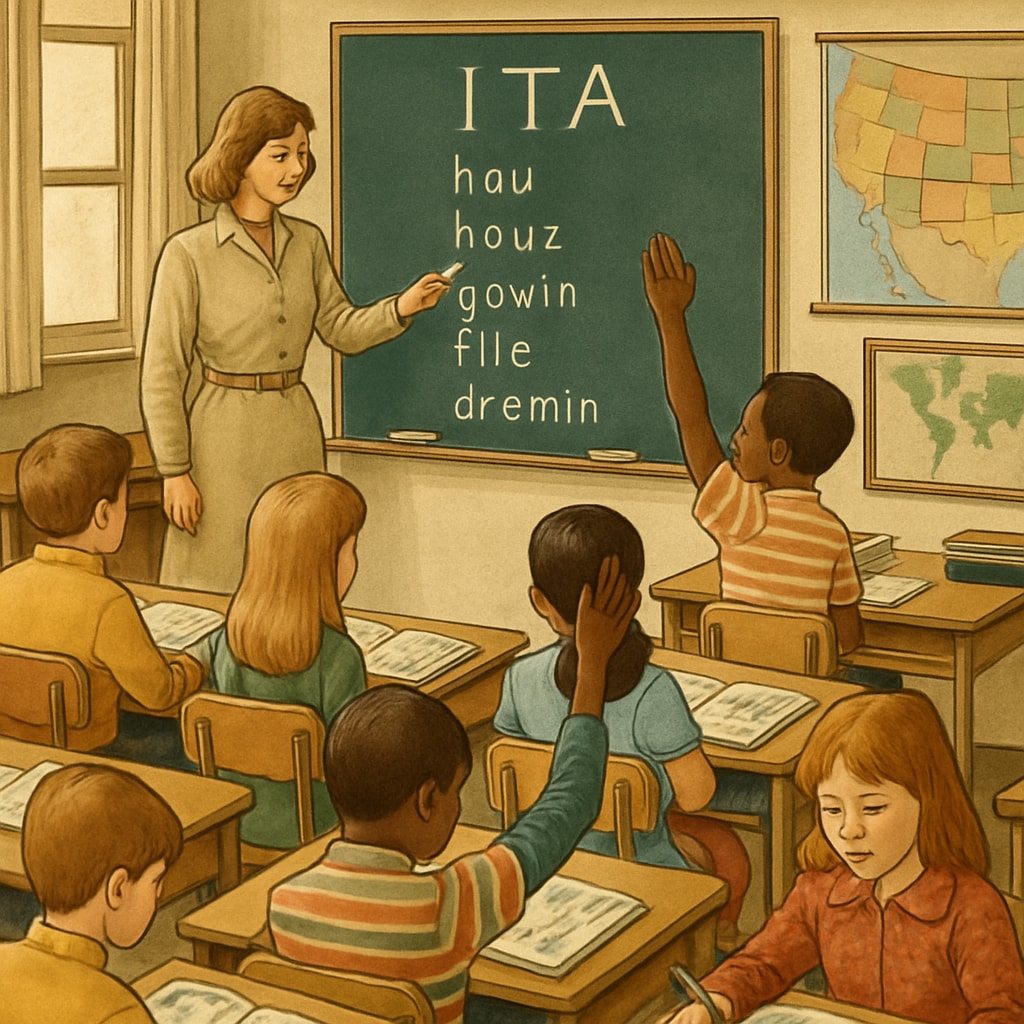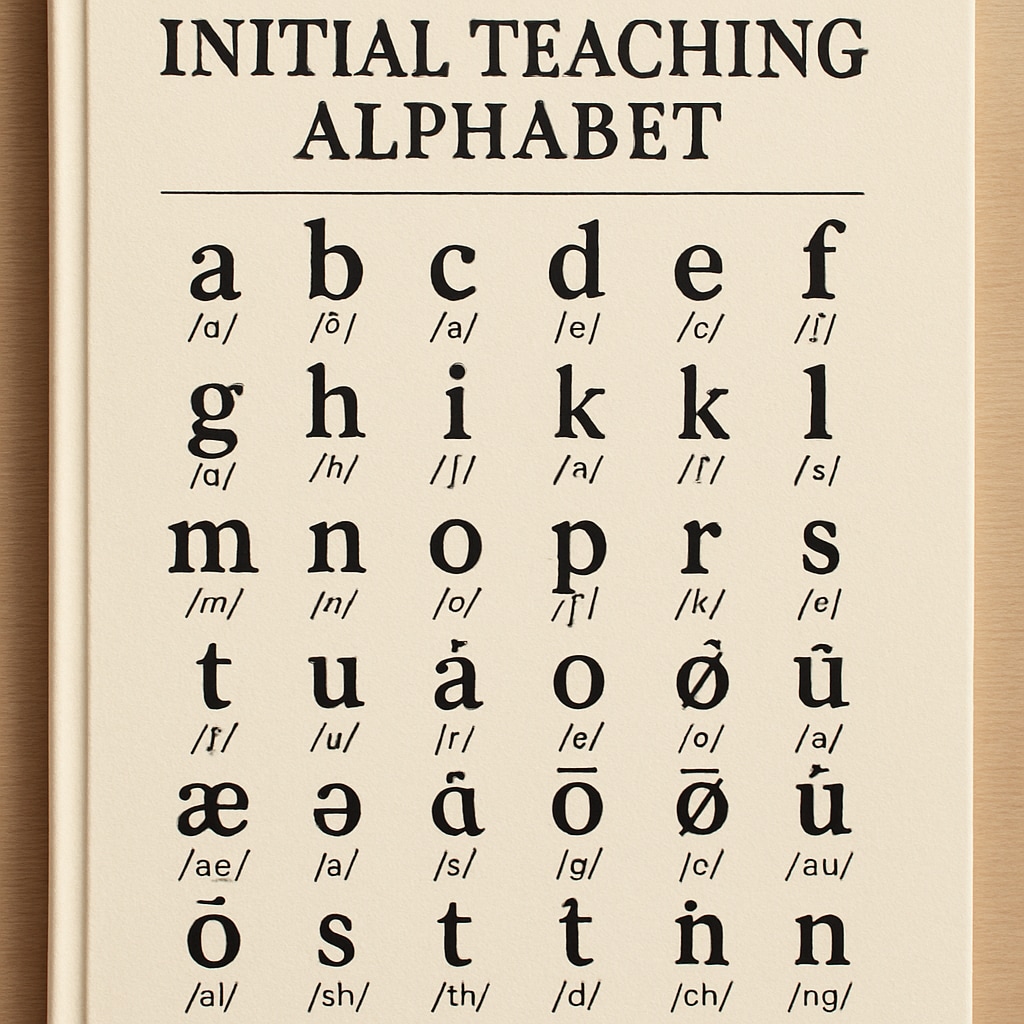The Initial Teaching Alphabet (ITA), a widely adopted educational experiment in the 1970s, aimed to simplify the process of teaching reading. However, while its intentions were noble, the long-term effects on students’ spelling abilities have sparked significant criticism. This article delves into the origins of ITA, its implementation, and the enduring challenges it has created, providing a valuable lesson in the importance of cautious innovation in education.
The Origins and Goals of the ITA Method
Developed by Sir James Pitman in the early 1960s, the Initial Teaching Alphabet was intended to address the complexities of the English language. English spelling, with its irregularities and exceptions, was seen as a barrier for young learners. ITA introduced a simplified 44-character phonetic alphabet designed to represent sounds more consistently, making it easier for children to decode words. By bridging the gap between spoken and written language, proponents hoped ITA would accelerate literacy development.
The method gained traction in the United Kingdom and the United States during the 1970s, supported by the belief that it would reduce frustration and foster a smoother transition to standard English. However, the adoption of ITA came with unforeseen consequences that became apparent only years later.

Unintended Consequences: Spelling Difficulties and Cognitive Confusion
While ITA showed initial promise in helping students recognize sounds and words, the transition to standard English spelling proved challenging for many. Students who began their literacy journey with ITA often struggled to unlearn its phonetic spellings and adapt to conventional spelling rules. This disconnect led to lasting spelling challenges, as learners had to essentially “relearn” a second written language.
For example, a word like “photo” might have been represented phonetically as “foeto” in ITA. Children accustomed to ITA’s logical but artificial framework found it difficult to reconcile these spellings with standard English conventions. As a result, many former ITA students experienced persistent spelling difficulties throughout their academic and professional lives.
Furthermore, educational researchers have noted that ITA created cognitive confusion. By introducing an intermediate system, children were forced to navigate two sets of rules—one for ITA and one for standard English—creating a burden on memory and learning processes. This raises questions about whether the temporary benefits of ITA outweighed its long-term drawbacks.
Lessons from ITA: Caution in Educational Experimentation
ITA’s legacy underscores the importance of carefully evaluating the potential long-term impacts of educational reforms before widespread implementation. While the method aimed to address a specific challenge—English spelling irregularities—it overlooked the broader developmental trajectory of literacy skills.
To avoid similar pitfalls in the future, educators and policymakers should consider the following principles:
- Comprehensive Testing: Any new teaching method should undergo rigorous long-term trials to assess its broader implications.
- Flexibility for Learners: Innovations should be designed to integrate seamlessly with existing systems, minimizing the cognitive load on students.
- Stakeholder Involvement: Teachers, parents, and literacy experts should all play a role in evaluating the feasibility and sustainability of new methods.
For a deeper understanding of the complexities of English spelling and the challenges it poses for learners, visit English spelling on Wikipedia.

The ITA Debate Today
Decades later, the ITA experiment continues to spark debate among educators and linguists. Some argue that its initial success in teaching phonetics justifies its use in specific contexts, while others highlight its long-term drawbacks as a cautionary tale. Modern educational approaches, such as synthetic phonics and whole language methods, have learned from ITA’s limitations, blending elements of phonetics with a focus on comprehension and fluency.
As technology and neuroscience offer new insights into how children learn, the lessons of ITA remain relevant. The method serves as a reminder that well-intentioned innovations must be balanced with an understanding of their broader and lasting impacts on learners.
For more context on literacy methods and their evolution, explore Phonics on Britannica.
Ultimately, ITA’s story is one of ambition and unintended consequences, emphasizing the need for thoughtful, evidence-based approaches to educational reform.
Readability guidance: This article uses short paragraphs and lists to enhance clarity. Transitions such as “however,” “for example,” and “as a result” ensure a smooth reading experience, while academic terms are explained for broader accessibility.


